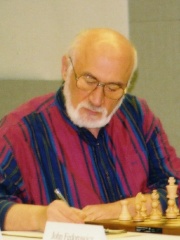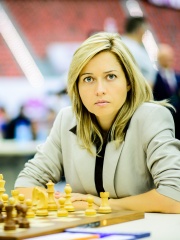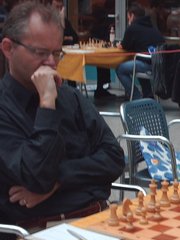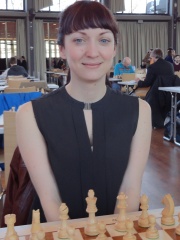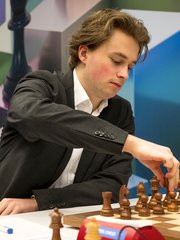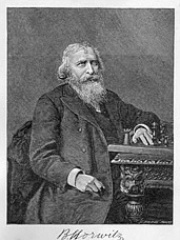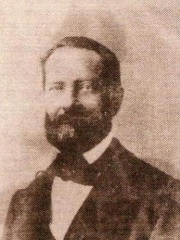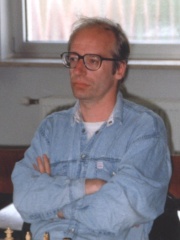
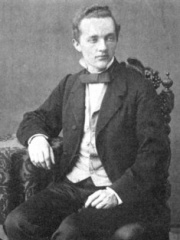
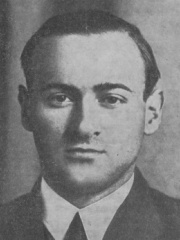
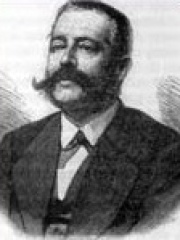
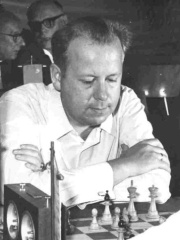
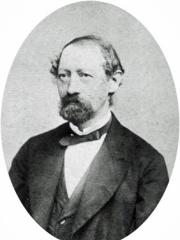
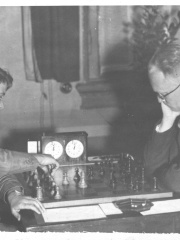
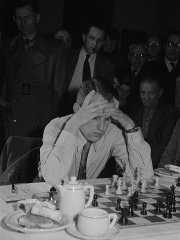
The Most Famous
CHESS PLAYERS from Germany
This page contains a list of the greatest German Chess Players. The pantheon dataset contains 461 Chess Players, 18 of which were born in Germany. This makes Germany the birth place of the 9th most number of Chess Players behind Poland, and United Kingdom.
Top 10
The following people are considered by Pantheon to be the top 10 most legendary German Chess Players of all time. This list of famous German Chess Players is sorted by HPI (Historical Popularity Index), a metric that aggregates information on a biography's online popularity. Visit the rankings page to view the entire list of German Chess Players.

1. Robert Hübner (1948 - 2025)
With an HPI of 64.69, Robert Hübner is the most famous German Chess Player. His biography has been translated into 33 different languages on wikipedia.
Robert Hübner (6 November 1948 – 5 January 2025) was a German chess grandmaster, chess writer, and papyrologist. He was one of the world's leading players in the 1970s and early 1980s.

2. Louis Paulsen (1833 - 1891)
With an HPI of 59.89, Louis Paulsen is the 2nd most famous German Chess Player. His biography has been translated into 22 different languages.
Louis Paulsen (15 January 1833 in Gut Nassengrund near Blomberg, Principality of Lippe – 18 August 1891) was a German chess player. In the 1860s and 1870s, he was among the top players in the world. He was a younger brother of Wilfried Paulsen. Paulsen was one of the first players to challenge the notion that an attack could be constructed out of brilliance. He put forward the idea that any brilliant attack would have failed against correct defence. His ideas were grasped by Wilhelm Steinitz, who declared that attack and defence have equal status, and particularly by Aron Nimzowitsch, who listed Paulsen among his six greatest "purely defensive players". Paul Morphy and Paulsen were early masters of the game and of blindfold chess; they were capable of playing 10 blindfold games at the same time without any major errors. Paulsen played in the final match of the 1857 First American Chess Congress, losing to Paul Morphy five games to one with two draws. In 1862 Paulsen drew an eight-game match with Adolf Anderssen. Paulsen defeated Anderssen in matches in 1876 and 1877.

3. Friedrich Sämisch (1896 - 1975)
With an HPI of 59.37, Friedrich Sämisch is the 3rd most famous German Chess Player. His biography has been translated into 22 different languages.
Friedrich Sämisch (20 September 1896 – 16 August 1975) was a German chess player and chess theorist. He was among the inaugural recipients of the title International Grandmaster from FIDE in 1950.

4. Jean Dufresne (1829 - 1893)
With an HPI of 58.40, Jean Dufresne is the 4th most famous German Chess Player. His biography has been translated into 19 different languages.
Jean Dufresne (14 February 1829 – 13 April 1893) was a German chess player and chess composer. He was a student of Adolf Anderssen, to whom he lost the "Evergreen game" in 1852.

5. Jacques Mieses (1865 - 1954)
With an HPI of 58.12, Jacques Mieses is the 5th most famous German Chess Player. His biography has been translated into 23 different languages.
Jacques Mieses (born Jacob Mieses; 27 February 1865 – 23 February 1954) was a German chess player. Mieses, who was Jewish, fled the Nazi regime in 1938 and later became a British citizen.p258 He was one of the inaugural recipients of the title International Grandmaster from FIDE in 1950.

6. Wolfgang Uhlmann (1935 - 2020)
With an HPI of 57.35, Wolfgang Uhlmann is the 6th most famous German Chess Player. His biography has been translated into 19 different languages.
Wolfgang Uhlmann (29 March 1935 – 24 August 2020) was a German chess grandmaster. He was East Germany's most successful chess player between the mid-1950s and the late 1980s, reaching the 1971 Candidates Tournament. During his career, Uhlmann played many of the top players of the time and won the East Germany Chess Championships 11 times. Uhlmann continued to play chess into his later years, before dying at the age of 85 in Dresden.

7. Tassilo von Heydebrand und der Lasa (1818 - 1899)
With an HPI of 57.26, Tassilo von Heydebrand und der Lasa is the 7th most famous German Chess Player. His biography has been translated into 17 different languages.
Tassilo, Baron von Heydebrand und der Lasa (known in English as Baron von der Lasa; 17 October 1818 – 27 July 1899) was a German chess master, chess historian and theoretician of the nineteenth century, a member of the Berlin Chess Club and a founder of the Berlin Chess School (the Berlin Pleiades).

8. Sonja Graf (1908 - 1965)
With an HPI of 56.91, Sonja Graf is the 8th most famous German Chess Player. Her biography has been translated into 20 different languages.
Susanna "Sonja" Graf (December 16, 1908 – March 6, 1965) was a German and American chess player. She was a women's world championship runner-up and a two-time U.S. women's champion. In 2016, she was inducted into the World Chess Hall of Fame.

9. Wolfgang Unzicker (1925 - 2006)
With an HPI of 56.52, Wolfgang Unzicker is the 9th most famous German Chess Player. His biography has been translated into 18 different languages.
Wolfgang Unzicker (26 June 1925 – 20 April 2006) was one of the strongest German chess Grandmasters from 1945 to about 1970. He decided against making chess his profession, choosing law instead. Unzicker was at times the world's strongest amateur chess player, and World Champion Anatoly Karpov called him the "world champion of amateurs".
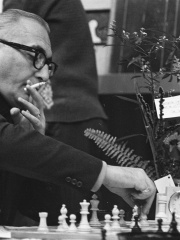
10. Hermann Pilnik (1914 - 1981)
With an HPI of 55.86, Hermann Pilnik is the 10th most famous German Chess Player. His biography has been translated into 15 different languages.
Hermann Pilnik (8 January 1914, Stuttgart, Germany – 12 November 1981, Caracas, Venezuela) was a German-born Argentine chess Grandmaster.
People
Pantheon has 18 people classified as German chess players born between 1766 and 2004. Of these 18, 5 (27.78%) of them are still alive today. The most famous living German chess players include Boris Gulko, Natalia Zhukova, and Curt Hansen. The most famous deceased German chess players include Robert Hübner, Louis Paulsen, and Friedrich Sämisch. As of April 2024, 2 new German chess players have been added to Pantheon including Curt Hansen, and Vincent Keymer.
Living German Chess Players
Go to all RankingsBoris Gulko
1947 - Present
HPI: 53.65
Natalia Zhukova
1979 - Present
HPI: 44.74
Curt Hansen
1964 - Present
HPI: 43.13
Elisabeth Pähtz
1985 - Present
HPI: 42.32
Vincent Keymer
2004 - Present
HPI: 36.54
Deceased German Chess Players
Go to all RankingsRobert Hübner
1948 - 2025
HPI: 64.69
Louis Paulsen
1833 - 1891
HPI: 59.89
Friedrich Sämisch
1896 - 1975
HPI: 59.37
Jean Dufresne
1829 - 1893
HPI: 58.40
Jacques Mieses
1865 - 1954
HPI: 58.12
Wolfgang Uhlmann
1935 - 2020
HPI: 57.35
Tassilo von Heydebrand und der Lasa
1818 - 1899
HPI: 57.26
Sonja Graf
1908 - 1965
HPI: 56.91
Wolfgang Unzicker
1925 - 2006
HPI: 56.52
Hermann Pilnik
1914 - 1981
HPI: 55.86
Bernhard Horwitz
1807 - 1885
HPI: 54.93
Carl Mayet
1810 - 1868
HPI: 53.33
Newly Added German Chess Players (2025)
Go to all RankingsOverlapping Lives
Which Chess Players were alive at the same time? This visualization shows the lifespans of the 13 most globally memorable Chess Players since 1700.

